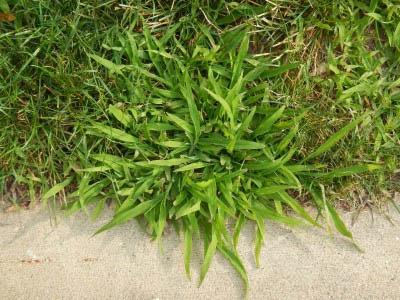To say it has been a wet summer in the Midwest and Mid-Atlantic would be an understatement.
 In July alone, up to 7.75 inches of rain were recorded in the Chicago area. Pittsburgh received nearly 7 inches for the month, and parts of Ohio recorded as much as 11 inches of precipitation.
In July alone, up to 7.75 inches of rain were recorded in the Chicago area. Pittsburgh received nearly 7 inches for the month, and parts of Ohio recorded as much as 11 inches of precipitation.So much for fast and firm.
Alternating periods of hot and cool temperatures along with copious amounts of rain followed by periods of dry weather have made for a fertile environment for annual summer weeds, like crabgrass, according to researchers at Michigan State University.
Annual summer weeds, like crabgrass, thrive in an environment where temperatures are 80 degrees or higher. Those conditions also are when low-mowed cool-season turf is at its weakest, says Aaron Hathaway, a research assistant at Michigan State under professor Kevin Frank, Ph.D.
Although there are several pre-emergent crabgrass control tools that are effective, such as prodiamine, bensulide, dithiopyr and pendimethalin, post-emergent control is a periodic necessity.
There are several options for post-emergent crabgrass control, but two stand out, says Hathaway.
Quinclorac and fenoxaprop-ethyl are effect for post-emergent crabgrass control, and there are properties unique to each.
Quinclorac is effective in controlling crabgrass is small - in the one-to-three tiller stage - or when it is what Hathaway called gorilla-sized - four or more tillers. Likewise, it is effective when used alone at controlling some broadleaf weeds, including clover and dandelions, and it can be tank-mixed with methylchlorophenoxypropionic acid (MCPP) and 2,4-D to enhance control of other broadleaf weeds. The addition of methylated seed oil also can improve efficacy. Quinclorac also is safe for use in new cool-season turf seedlings
Fenoxaprop-ethyl also is effective at post-emergent control of crabgrass at any growth stage - new or gorilla-sized. It is more effective than quinclorac at controlling goosegrass. When used alone it does not provide control of broadleaf weeds and thus should not be tank-mixed with phenoxy herbicides. The addition of a non-ionic surfactant, however, can improve efficacy.
Other post-emergent crabgrass control options, Hathaway says, include mesotrione, topramezone.

